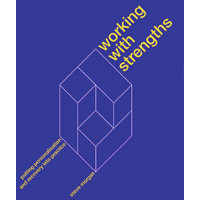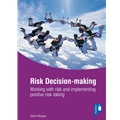Reflective Practice - Re-connecting with a lost art might ignite a revolution in training
 Tuesday, February 28, 2012 at 9:23PM
Tuesday, February 28, 2012 at 9:23PM Reflective Practice
Re-connecting with a lost art might ignite a revolution in training
[Provisionally accepted for publication in OpenMind March 2012]
Service users and carers are likely to benefit most when they are served by a workforce that is motivated and enthusiastic about its work, that recognizes and works to its strengths, that feels supported, and is able to reflect on practice as an on-going function of its own development. Within this picture training as a function has an important role to play, but can easily become a wasted resource if it is poorly focused and lacks clarity of purpose. Furthermore, service users and carers possess invaluable experiences and skills that can contribute to the development of the workforce. So, why does it so often feel like reflective practice and genuine involvement are lofty ideals belonging to a parallel universe?
Institutional thinking
 We live in an age where diminishing resources somehow become an opportunity; where constant change is seen to be the primary force for service improvement; where person-centred principles fight for oxygen alongside a greater demand for short-term interventions and rapid turnover; and a self-obsessed management culture demands greater engagement in the management function from those who would prefer to be practitioners. Commissioning of services often seems to function from within a sealed bubble, fueled by a stream of data in response to targets driven more by financial considerations than service user, carer or practitioner experiences. As time and space diminishes expectations remain high, or increase. Welcome to the high-impact low-cost, something-for-nothing approach to service delivery, where smoke and mirrors is the standard uniform.
We live in an age where diminishing resources somehow become an opportunity; where constant change is seen to be the primary force for service improvement; where person-centred principles fight for oxygen alongside a greater demand for short-term interventions and rapid turnover; and a self-obsessed management culture demands greater engagement in the management function from those who would prefer to be practitioners. Commissioning of services often seems to function from within a sealed bubble, fueled by a stream of data in response to targets driven more by financial considerations than service user, carer or practitioner experiences. As time and space diminishes expectations remain high, or increase. Welcome to the high-impact low-cost, something-for-nothing approach to service delivery, where smoke and mirrors is the standard uniform.
Then something goes wrong… the machine cranks up the inquiry process to produce the usual suspects in terms of recommendations; something about training, rarely thoughtful or specific, more in line with all staff must go on risk assessment training. The box is ticked, and righteous indignation against failing practitioners subsides… until the next time. Without doubt there are poor practitioners, neglectful of the basics of decent care and support, but they are rare. There are instances where risky situations have resulted in unwelcome consequences or fatalities, but these too are rare. The fashionable focus on fear drives the organization to devote disproportionate attention to precious few incidents and generalize the findings to all parts of the service. Tail wags dog, as proclamations are issued that lessons will be learned so this will never happen again. Practitioners are left feeling frustrated that no recognition is ever made of the good work that goes on every day.
Cognitive dissonance
Policy statements extol that person-centred services will offer choice and will support autonomous decision-making by service users. The individual will be at the heart and services will fit around them in a bespoke tailored plan, efficiently resourced to meet their priorities. The person knows best… not just about what they need, but also about how those needs can be met. The unpaid carers will be recognized for their vitally significant knowledge and expertise as a crucial resource, and they will be supported to sustain their ability to perform their caring role.
Yet, this vision will require colossal change in the culture and training around the ways services have traditionally been delivered. Meanwhile back on planet earth… practitioners know the key to potential success in everything they do is based in trusting working relationships, which take time to achieve. However, the messages they receive are that resources are finite, caseloads need turnover and throughput is paramount. Increasing demand through referrals needs to be managed alongside decreasing numbers of available beds. Everything needs to be recorded on the myriad number of forms designed by a plethora of bureaucrats to feed electronic systems of ever-increasing complexity, which may go off-line at times, so back everything up with paper copies. Policies imply that supervision is upheld as an essential supportive tool but is really only experienced as a managerial function to monitor compliance with targets and administrative demands of the machine.
What is reflective practice?
 It is easy to lose sight of what can nurture and support us in the somewhat frenzied demands of service evolution. Yet, as the wheel turns it is only a matter of time before what goes around comes around, and we will recapture out of necessity that which keeps us sane in an increasingly insane system. Schon [1] defines the process of reflective practice as “the capacity to reflect on action so as to engage in a process of continuous learning”. Even with pressures on time good practitioners pay critical attention to what they are experiencing in practice, both personally or in conversation with others; they use time constructively, integrating degrees of intuitive, instinctive and creative thinking in real-time, because they know the luxury of dedicated time will largely now be denied them. It can be prompted by keeping in mind and constantly applying the three simple questions outlined by Rolfe et al [2]: ‘what’, ‘so what’ and ‘now what’?
It is easy to lose sight of what can nurture and support us in the somewhat frenzied demands of service evolution. Yet, as the wheel turns it is only a matter of time before what goes around comes around, and we will recapture out of necessity that which keeps us sane in an increasingly insane system. Schon [1] defines the process of reflective practice as “the capacity to reflect on action so as to engage in a process of continuous learning”. Even with pressures on time good practitioners pay critical attention to what they are experiencing in practice, both personally or in conversation with others; they use time constructively, integrating degrees of intuitive, instinctive and creative thinking in real-time, because they know the luxury of dedicated time will largely now be denied them. It can be prompted by keeping in mind and constantly applying the three simple questions outlined by Rolfe et al [2]: ‘what’, ‘so what’ and ‘now what’?
So what?
Dedicated time for training all too often (but not exclusively) involves disparate groups of participants presented with theoretical knowledge, and occasionally asked to apply it to prepared situations, but with limited emphasis on the value of reflective practice. A Practice Based Evidence initiative in 2011 used a specifically designed reflective practice tool [3] to gain feedback from 297 participants across 26 teams; the organization’s training was rated 13th out of 14 good practice items, with a range of qualitative comments that consistently identified the training as being too generalized to relate to their own team, and experienced more as an organization box-ticking exercise.
Why do we sustain initiatives that so often result in negative responses? This is time that could be better utilized in promoting and supporting reflective practice and effective team development. But such a change should not be the sole responsibility of the organization; every practitioner who complains about a centralized organization initiative need firstly to ask what is their own personal responsibility for their on-going development. Also, what is the team’s collective responsibility for its on-going evaluation and development?
Now what?
If we take risk training as an example, induction training and on-going practice development will require very different approaches. The starting point for the organization is adopting sufficient flexibility within its approach and priorities regarding the training and development of its staff, and to consider the appropriate tools and guidelines to be accessed as useful resources.
- Individual practitioner responsibilities:
- Continual reflective practice as an integral part of day-to-day working
- Make use of reflective practice tools [3] as regular personal prompts, and occasionally in supervision where appropriate
- Team responsibilities:
- To establish regular (e.g. 6-monthly) team meetings for reviewing agreed areas of risk practice, as prompted by items on the reflective practice tools
- To use practice guidelines, access to literature and team case material, as appropriate, as resources for the focus of team training
- To record attendances and reflective tool evaluations as a means of informing the organization that continued training is happening
- Organization responsibilities:
- To recognize the value of individual reflection & team-based flexible training initiatives as meeting the needs of best practice, and use the audit information that emerges from their recording
- To update the organization policy and practice guidelines as a continuing source of important risk information for all staff
- Training Department staff to:
- Provide a reduced number of risk training workshops, designed specifically for new staff induction purposes only
- Induction workshops to include reference to the organization strategy, vision and expectations; use of reflective practice tools & guidelines; specific language of positive risk-taking [3]; documenting risk to local standards
- Training team staff’ involved in risk training to regularly attend team-based sessions as observers; but also to collate the organization audit information, offer reflections, and collate information on unmet risk training needs identified
- Training staff to reflect on how the messages through training on risk, personalization, strengths working and recovery are consistent; and link to other legal requirements identified through MCA, MHA updates, safeguarding
It may not always be appropriate to have service users or carers attending team development sessions, but they will have an invaluable role to play in shaping and delivering the induction training of new staff and in meeting other specialist training needs that can be best delivered centrally by an organization. A Practice Based Evidence initiative in Warwickshire [3] focusing on staff awareness of carers engaged input from a group of carers from the outset and throughout, with feedback from 684 staff rating their input as the most influential factor.
References
- Schon, D. A. (1983). The Reflective Practitioner: How Professionals Think in Action. Basic Books, New York. pp102-4.
- Rolfe, G., Freshwater, D. and Jasper, M. (2001). Critical Reflection in Nursing and the Helping Professions: a User’s Guide. Palgrave Macmillan, Basingstoke.
- www.practicebasedevidence.com (2011)







Reader Comments